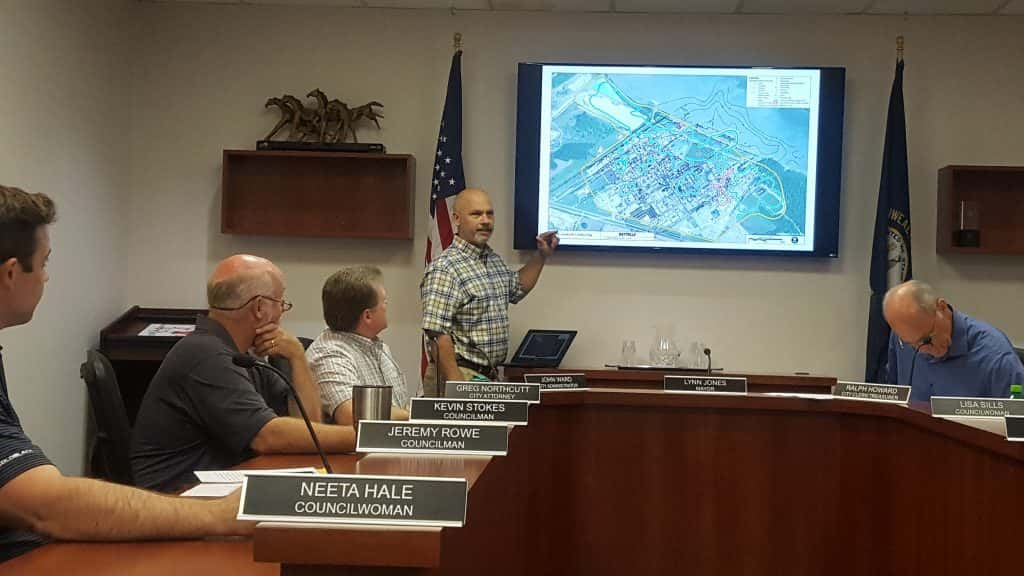
The U.S. Environmental Protection Agency (EPA) on Nov. 30 announced its proposed comprehensive cleanup plan to address contaminated soil and groundwater at the BF Goodrich superfund site in Calvert City.
“For over three decades this site has been on what is called the ‘National Priority List,’” said EPA Administrator Scott Pruitt. “I am pleased to say this agency can finally offer Kentuckians a path forward. This proposed cleanup plan is a monumental step towards ensuring the contaminated groundwater and the Tennessee River are protected for Kentuckians to depend on and enjoy for many years to come.”
“I would like to thank Administrator Pruitt for his leadership on an issue that is incredibly important to Kentucky,” said Gov. Matt Bevin. “Under his direction, the EPA coordinated with our own Kentucky Energy and Environment cabinet to formulate a solution that will protect both the health of Kentuckians and the welfare of our environment. What a refreshing change of pace from past EPA Administrators who have talked much and delivered little on this issue.”
The current facility manufactures ethylene dichloride (EDC), a feedstock for the production of polyvinyl chloride (PVC). Until the 1980s, chemical wastes were discharged to a series of unlined ponds in the floodplain where contaminants migrated into the soil, groundwater, and the Tennessee River. The site was listed on the National Priorities List in 1983.
The EPA began a sitewide assessment in 2010 to further determine the nature and extent, as well as potential risks of contamination. EPA Associate Project Manager Brad Jackson said in a June Calvert City Council meeting that crews had identified contaminants, which included elemental mercury in the soil and “volatile organic” and inorganic compounds in groundwater samples. EPA officials had also identified areas of highest concentration. Jackson met with the council to discuss progress made on identifying areas of existing contamination and potential cleanup measures at the site.
The 260-acre site once housed two landfills – one, which incinerated wastes from the BF Goodrich facility, and another that accepted waste from the Airco plant – discovered upon their closure in 1981 to have been leaking liquids that contaminated soil and groundwater. It was declared a superfund site in 1983, according to the EPA, and long-term cleanup plans approved by the EPA were implemented by potentially responsible parties in the 1990s. Remediation efforts included removal and treatment of groundwater, improving landfill covers and implementing land use restrictions; soil was removed, treated and capped at a former burn pit location, as well.
Groundwater treatment and soil contamination monitoring have been ongoing in addition to those long range cleanup efforts.
“The total that we came up with – and it kind of varies depending on the indicators that we used to try to measure it – anywhere from just visually seeing the material when we drill bore holes, all the way to measuring it in the groundwater,” Jackson said in the June meeting. “We’re estimating that this represents upwards of 3.5 million cubic yards of soil that has been contaminated with this … type material.”
Jackson said EPA officials had in years past had concerns as to whether contaminants from the site were migrating into the Tennessee River, and crews had last summer moved equipment out onto a barge in the river and drilled at different depths for testing. The results of those tests, he said, indicated some material had moved beneath the river.
Plans to address cleanup included constructing a wall from ground surface down to bedrock, about 90 feet down in some areas around the site, to prevent contaminated groundwater from flowing into the river. The plan also includes pump system installation to pull rainwater for onsite treatment before it is discharged back into the river. Construction on the wall could take up to two years to complete, Jackson said during the June meeting.
Construction costs for the preferred option is estimated at $200 million to $250 million, according to an EPA news release, with long-term operating and maintenance costs ranging from $1 million to $3 million, annually.
EPA held a public meeting on Thursday, Dec. 7, 2017, at the Marshall County Public Library located 23 Park Road in Calvert City. Representatives from EPA presented the details of the plan to address the environmental impacts at the B.F. Goodrich site, and answer any questions the public may have regarding the preferred cleanup remedy. Comments may also be emailed to Jackson.Brad@epa.gov. Residents who prefer to submit written comments may mail them, postmarked no later than Dec. 30, 2017, to Brad Jackson at US EPA, 61 Forsyth St., SW, 11th Floor, Atlanta, GA 30303.
To view the proposed cleanup plan and for more information about the BF Goodrich Superfund Site, visit: www.epa.gov/superfund/bf-goodrich
A repository for information regarding the Site has been established in the Marshall County Public Library located at 23 Park Road, Calvert City, KY 42029.
